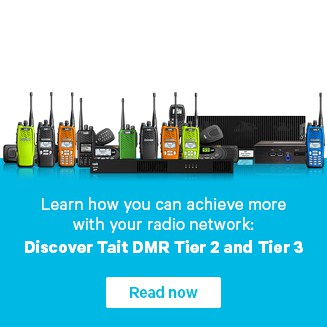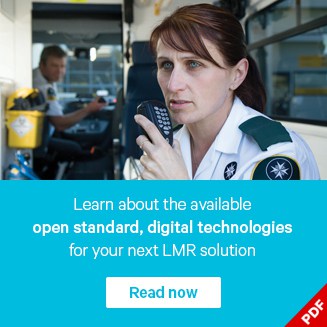Introduction to DMR
DMR Standard
How does DMR Trunking work?
Perhaps the best way to explain how trunking works is an analogy. Imagine you walked into a bank to make a withdrawal. There are three different tellers – one for withdrawals, one for deposits, and one for business transactions. For whatever reason, the withdrawal line you are in has a long line, but the business transaction line is empty. But because you want to make a withdrawal, you must wait your turn until you reach the front of the withdrawal line.
This is how conventional radio works. There are dedicated channels – channel one might be only for police, channel two for fire, and channel 3 for animal control. The result for many organizations is that some channels become crowded while others go unused. Suppose you are a police officer wanting to make a call, if your channel is busy then you will need to wait your turn, even if the other two channels are open. Trunking resolves this problem.
Going back to our bank analogy, imagine you showed up ready to make a withdrawal. There are still 3 tellers, but each is capable of withdrawals, deposits, or business transactions. As soon as a teller becomes open, the next person in line gets to make their transaction. Since you can use all available tellers, your transaction will occur much faster.
This is the same way trunked radio works. All channels are available to all users. If you want to make a call, the radio network will automatically and dynamically assign your call to the next available channel. In many cases, there will be no wait time, but even if you do need to wait it will last a very short time.
So now let’s look at a specific example.
A trunked radio system includes a Control Channel that is used to send messages between the trunked system and the subscriber units. It also has a number of Traffic Channels used for the voice calls. The actual number required depends on the number of groups using the system and the number of calls taking place. Normally there would be at least 4 traffic channels but in this simple example there are only two traffic channels. There may be hundreds of subscribers on a trunked system, but this example shows just 11 subscribers. The subscribers consist of different groups or teams: fire trucks, ambulances, police cars and highway patrol cars.
If one of the ambulances wanted to talk to the other ambulances, then they would press the push-to-talk button. The subscriber unit would use the control channel to send a request for a traffic channel to the system. The system would send a message back, which automatically directs all the ambulances to the available traffic channel. Since channel A is being used by fire, the call is directed to Channel B.
The subscriber would then use channel B for their call.
As soon as you finish your call, the channel you used will become open again for another caller to use. All of this happens automatically and requires no special interaction from the user.
Thanks to this ability to share a trunked line, you won’t need 100 channels to serve 100 radio customers. People are not constantly using channel space, which means that you really only need a few trunked channels for over 100 people. As spectral efficiency becomes more important, so does trunking technology.
 Radio Academy
Radio Academy





